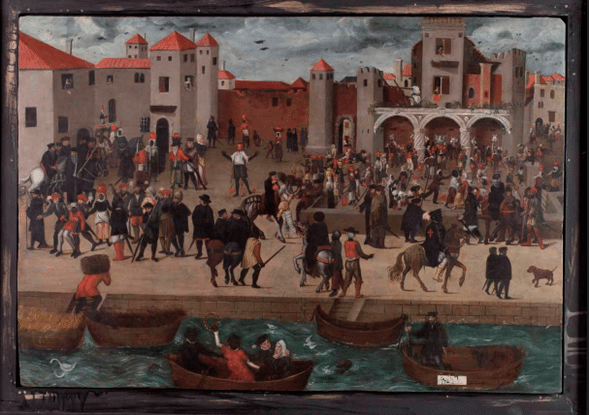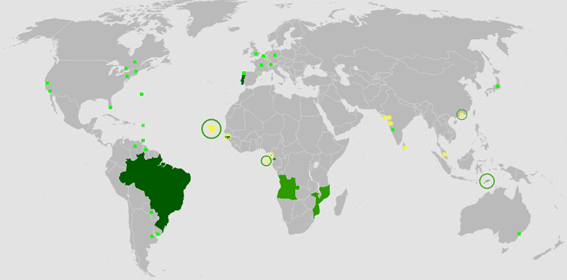Vasco da Gama
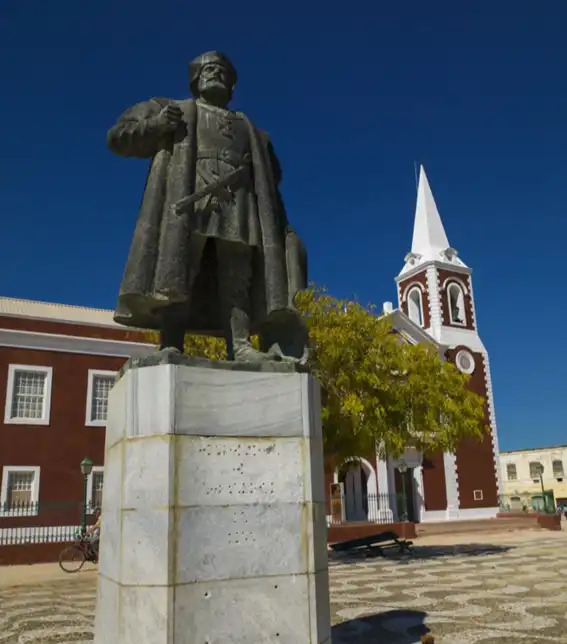
Now that we are at it, please let me take advantage of this day, December 24, 2024, to mention the 500 years of the death of Vasco da Gama, the discoverer of the maritime route to India, not of India, of course, as it was known for a long time by then. Vasco da Gama died on Christmas Eve in Cochin, India, at the age of 58 years, 3 months after being nominated viceroy of the Portuguese State of India on his 3rd trip there.
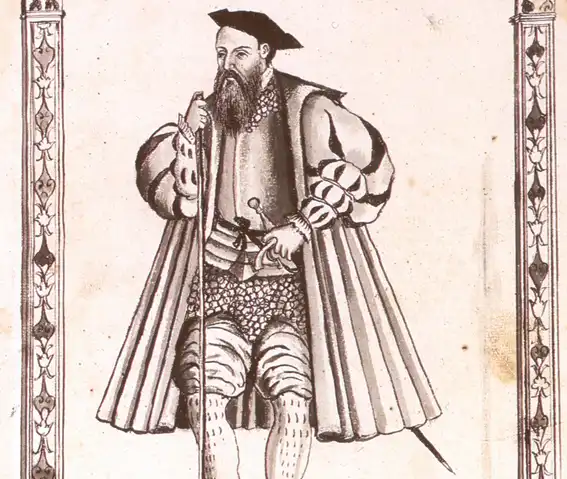
His first voyage (July 8, 1497 – September 18, 1499), the longest ocean voyage ever made until then (near to 40 thousand kilometers), took him more than two years, and from his 140-180 men strong crew, only 55 came back alive to Lisbon in two of the four boats that had started the trip. Vasco da Gama’s achievements in this voyage set the stage for Portugal’s global influence. It was not until a century later that other European powers were able to challenge Portugal’s monopoly and naval supremacy in the Cape Route, first established by Vasco da Gama’s groundbreaking journeys.
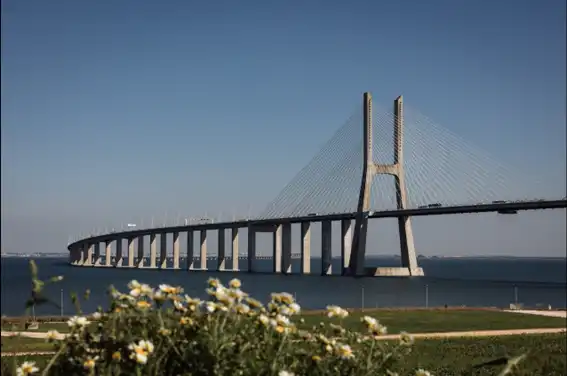
According to Fernandes (2021), what the legend about Vasco da Gama hides is that he was very rude and violent, who robbed ships, ports, and people, killed and tortured many, and craved fortune and social status, being as he was an illegitimate son of lower nobility.
The most ventilated episode illustrating this negative side of Vasco da Gama’s personality is “The Fate of the Miri,” a so-called chapter dedicated by Roger Crowley (2015, p.118-128). The Miri, a large dhow, would be carrying around 240 pilgrims from Mecca to Calicut. Vasco da Gama would have set fire to the boat and killed all on board, except “for its hunchback pilot and some twenty children, whom he ordered to be converted to Christianity.” (Crowley, p.128)
Vasco da Gama’s voyages, however, remain a cornerstone in global history. Reported as one of the first oral exchanges on arrival, between one landed crew member and a local, was the famous phrase according to which the expedition came on the search for Christians and spices, being probably irrelevant the arbitrary order of those objectives. Vasco da Gama’s role in connecting Europe and Asia via the Cape of Good Hope transformed global commerce and geopolitics.
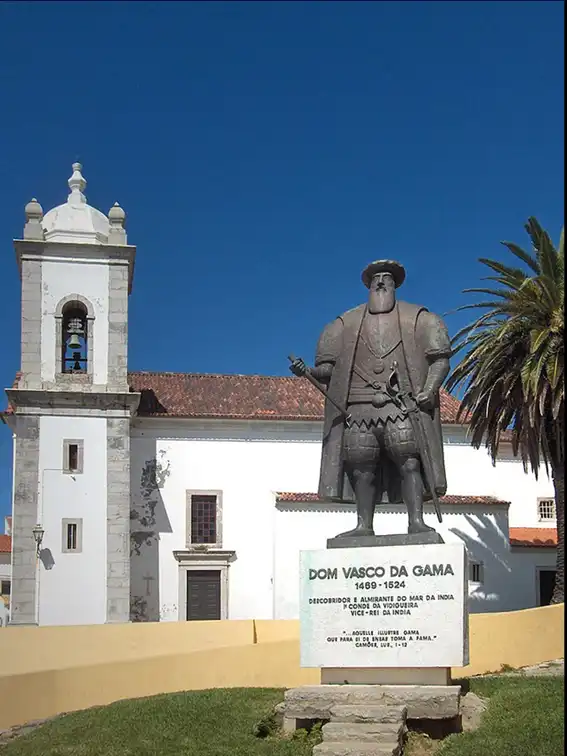
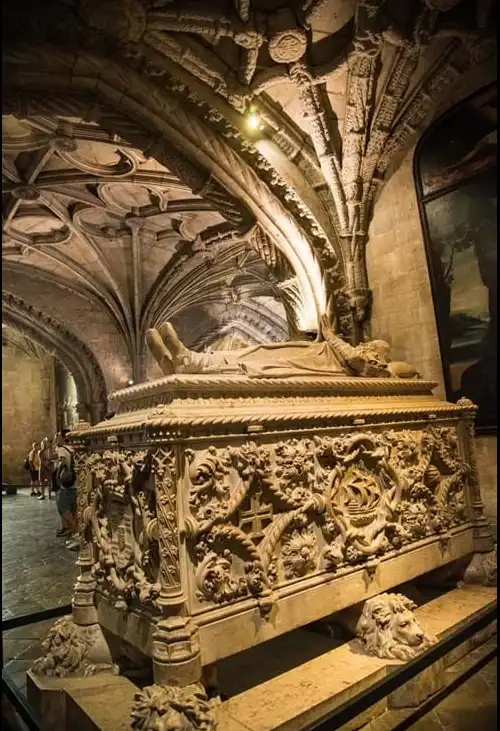
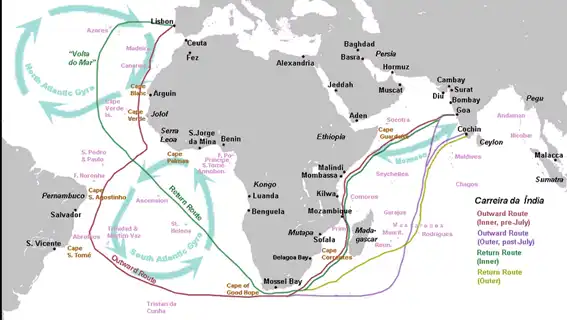
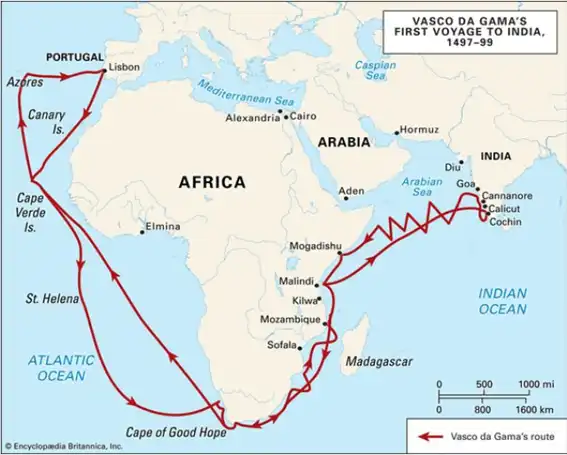
According to Fernandes (2021), what the legend about Vasco da Gama hides is that he was very rude and violent, who robbed ships, ports, and people, killed and tortured many, and craved fortune and social status, being as he was an illegitimate son of lower nobility.
The most ventilated episode illustrating this negative side of Vasco da Gama’s personality is “The Fate of the Miri,” a so-called chapter dedicated by Roger Crowley (2015, p.118-128). The Miri, a large dhow, would be carrying around 240 pilgrims from Mecca to Calicut. Vasco da Gama would have set fire to the boat and killed all on board, except “for its hunchback pilot and some twenty children, whom he ordered to be converted to Christianity.” (Crowley, p.128)
Vasco da Gama’s voyages, however, remain a cornerstone in global history. Reported as one of the first oral exchanges on arrival, between one landed crew member and a local, was the famous phrase according to which the expedition came on the search for Christians and spices, being probably irrelevant the arbitrary order of those objectives. Vasco da Gama’s role in connecting Europe and Asia via the Cape of Good Hope transformed global commerce and geopolitics.
According to Adam Smith’s Wealth of Nations (1776), “The discovery of America, and that of a passage to the East Indies by the Cape of Good Hope, are the two greatest and most important events recorded in the history of mankind.” (Smith, p.622) Vasco da Gama’s voyages exemplify the latter, marking him as one of history’s pivotal figures. Not too bad for a small nation as Portugal to be responsible for at least one of those events – at least until the end of the 18th century, if not for both as I ventilate in the chapter about Columbus.
The impact of Vasco da Gama’s expeditions reshaped the balance of power in Europe and beyond. For better or worse, Vasco da Gama’s legacy is inseparable from the Age of Exploration. Even today, Vasco da Gama is studied for his remarkable achievements and the controversies that surround his methods. His role in opening the Cape Route not only boosted Portugal’s economy but also established Vasco da Gama as a symbol of ambition and resilience in maritime history.
Critics like Fernandes (2021) argue that Vasco da Gama’s darker side cannot be ignored. His actions in ports such as Calicut and Cochin reveal a brutal approach to securing Portugal’s dominance. However, Vasco da Gama’s name remains tied to the golden age of Portuguese discoveries. Despite these criticisms, Vasco da Gama’s voyages represent the spirit of exploration that defined an era.
By December 24, 2024, we commemorate 500 years since Vasco da Gama’s death. This milestone highlights not only his role as a key figure in maritime history but also the complexities of Vasco da Gama’s character. Through his voyages, Vasco da Gama transformed the world’s understanding of geography and commerce.
The story of Vasco da Gama is a reminder of how ambition and discovery often come at a cost. His legacy, marked by both admiration and critique, ensures that Vasco da Gama remains one of history’s most debated explorers.
Vasco da Gama’s first voyage, in particular, stands as a testament to human endurance and ingenuity. From Lisbon to Calicut, Vasco da Gama and his crew faced immense challenges, including scurvy, storms, and hostile encounters. The name Vasco da Gama, therefore, is synonymous with courage and determination. Even five centuries later, Vasco da Gama’s name continues to evoke both awe and reflection, a fitting tribute to one of the most transformative figures in world history a trailblazer of globalization.
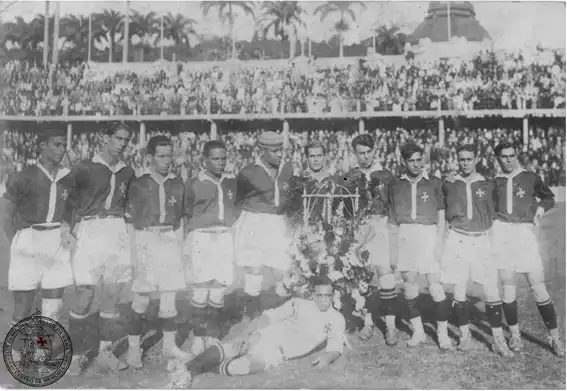
References
Canelas, Lucinda “Lembrar Vasco da Gama como deve ser — a “fazer história” in Público, November 26, 2024
Cliff, Nigel “Guerra Santa. As viagens épicas de Vasco da Gama e o ponto de viragem em séculos de confronto entre civilizações”, Texoto, Alfragide, 2011 (Original title: “Holy War. How Vasco da Gama’s Epic Voyages Turned the Tide in a Centuries-Old Clash of Civilizations”, 2011)
Cortesão, Armando “The Mystery of Vasco da Gama”, Junta de Investigações do Ultramar, Lisboa/Coimbra, 1973
Crowley, Roger “Conquerors. How Portugal forged the first global empire”, Faber & Faber, London, 5015
Fernandes, Tiago de Matos “Enquanto Vasco da Gama dormia”, in Público, May 2, 2021
Fonseca, Luís Adão da “Vasco da Gama. O Homem, a Viagem, a Época”, Comissariado da Exposição Mundial de Lisboa, 1998
Garcia, José Manuel “Evocação de Vasco da Gama, 500 anos depois da sua morte”, in Público, December 24, 2024
Marques, Vanda “Os mistérios da vida e da morte de Vasco da Gama”, in Sábado, December 12, 2024
Martins, Luís Almeida “Vasco da Gama, O homem que mudou o mundo”, in Visão, December 12, 2024
Smith, Adam “An Inquiry into the Nature and Causes of the Wealth of Nations”, Wordsworth Classics of World Literature, 2012
Subrahmanyam, Sanjay “Vasco da Gama. A carreira e a lenda do maior navegador de sempre”, Desassossego, Edições Saída de Emergência, Estoril, 2024 (original title: “The Career and Legend of Vasco da Gama”, Cambridge University Press, 1997)
“Vasco da Gama e a conquista dos mares” in Super Interessante História, Edição Biblioteca

